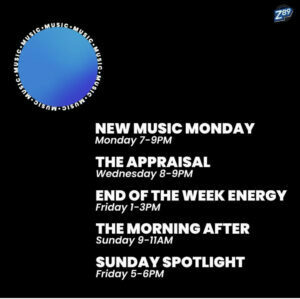How Rema’s ‘Calm Down’ With Selena Gomez Slow-Burned Its Way to the Top of the Pop Airplay Chart
When it comes to a hit song, some roads are longer than others. Take Rema’s “Calm Down,” the second single from the Nigerian afrorave artist’s album Rave & Roses, which was initially released in February 2022. The song was a success out of the gate among the afrobeats community, and began buzzing on Rhythmic radio and on streaming platforms. But in August 2022, Selena Gomez hopped on a remix, and the song began to take off. It eventually topped the Billboard U.S. Afrobeats Songs chart — where it has remained at No. 1 for a record-setting 36 weeks — and reached No. 1 on the Billboard Global Excl. U.S. chart, signifying its success outside the United States.
But the song continued to grow, and with Gomez on board, Interscope Geffen A&M’s (IGA) promotions team, alongside that of Virgin Music, was working the song hard behind the scenes. This week, nine months after the remix’s release and more than a year since the original came out, that hard work — and determination to cross it over into Top 40 radio — has paid off, as “Calm Down” reaches No. 5 on the Billboard Hot 100 and becomes the first song to top both the Billboard U.S. Afrobeats Songs chart and Billboard‘s Pop Airplay chart in history. And that success helps make IGA executive vp of promotion Chris Lopes Billboard’s Executive of the Week.
Here, Lopes talks about the song’s unusually long road to the top of the Pop Airplay chart and what he’s learned from the process. “I think it just reinforces what we already know: Trust your gut. Follow the signs,” he says. “No. 1 records are fun to be a part of, and the ones that have a lot of obstacles to overcome are always rewarding for our team.”
This week, Rema’s “Calm Down” feat. Selena Gomez became the first Afrobeats song to top the Pop Airplay chart in the U.S. What key decision did you make to help make that happen?
There was already a buzz at rhythmic radio on Rema’s original version of “Calm Down.” Then Selena jumped on the track. When our co-head of A&R, Sam Riback, and senior director of A&R, Vanessa Anguili, played it for president of promotion Brenda Romano and me, we instantly loved it. The song’s style and tone are unique and we all recognized the song’s appeal and wanted to go after it at Top 40.
As innovative as the song is, for some programmers it wasn’t a one-listen record, but radio’s confidence and support grew over time. We are so grateful to our radio partners for sticking with us and this project. Don Coddington and Kurt Biersmith on our national promotion team and our field staff continually spurred new interest and spread the success stories that made “Calm Down” undeniable. And Marni Halpern and the Virgin team leaned in, in a big way, from start to finish.
This remix first debuted last August and reached the top of Pop Airplay nine months later. How would you describe the song’s journey to ultimately the No. 1 slot on pop radio? Why did it make sense to cross it over to pop?
Nine months is an exceptionally long time to actively work a song at Top 40 and for it to go No. 1, but every week, positive developments surfaced and raised the song’s profile to create new interest in the track. “Calm Down” was already top 20 on Spotify’s Today’s Top Hits and top 10 on Pop Rising when we introduced Top 40 to the song in August 2022, and the streaming data were helpful talking points for us to take to radio. Airplay and streams rose together and by January 2023, we were top 20 airplay. Local Shazams followed and in a few cases preceded market airplay. The song became familiar enough to research massively at Top 40 and became one of the biggest spin and audience gainers at the format.
Ultimately, Top 40’s success reignited Rhythmic radio’s campaign, and “Calm Down” was No. 1 most added at urban radio this week. For some listeners, it took a while for “Calm Down” to connect and become one of their favorite songs. But in our minds, that contributed to the track’s longevity — listeners never tired of the track. Eventually, both Top 40 and Rhythm reached No. 1, U.S. Shazam held No. 1 for two months and consumption rose to an all-time high.
You’ve been in this business a long time and seen a lot of waves on radio. What have you learned from the success of this song in particular?
I think it just reinforces what we already know: Trust your gut. Follow the signs. No. 1 records are fun to be a part of, and the ones that have a lot of obstacles to overcome are always rewarding for our team.
As pop radio evolves, do you see an opening for more artists and genres from outside the usual fare making inroads at pop radio?
Sure, Top 40 is in a continual state of evolution, but it’s always been a song-driven format. So, any song from any genre that can command attention will always have a shot.
Powered by Billboard.

